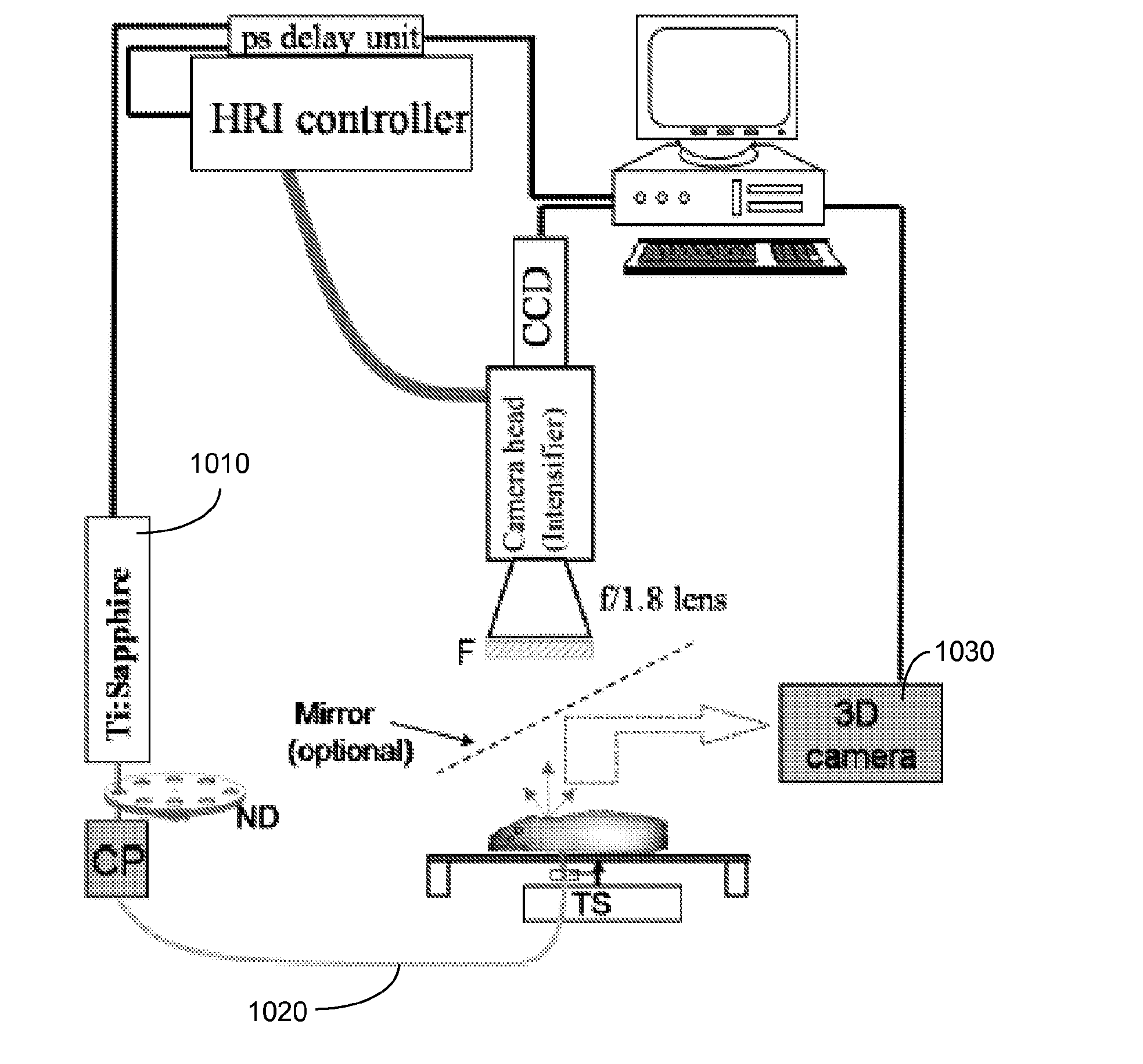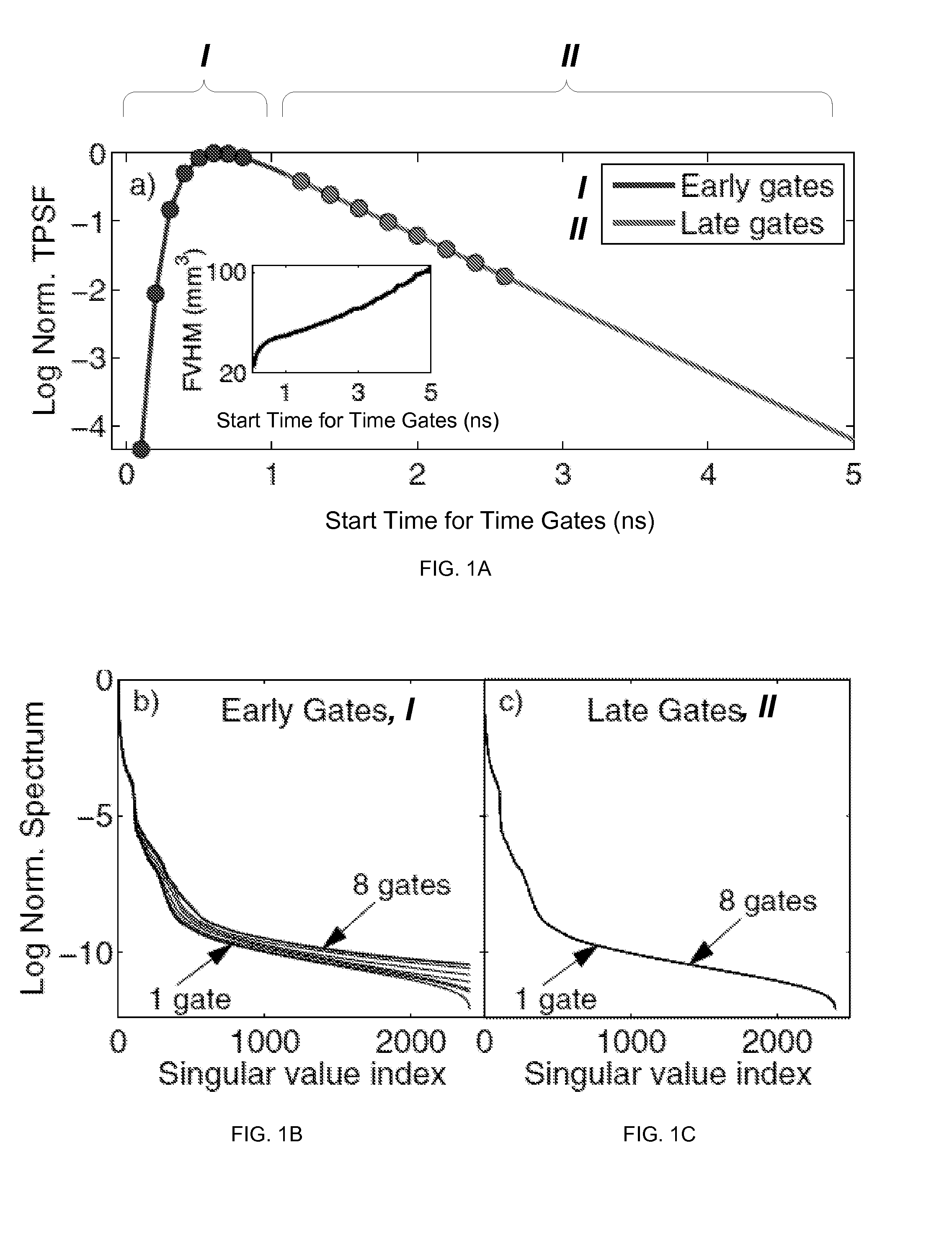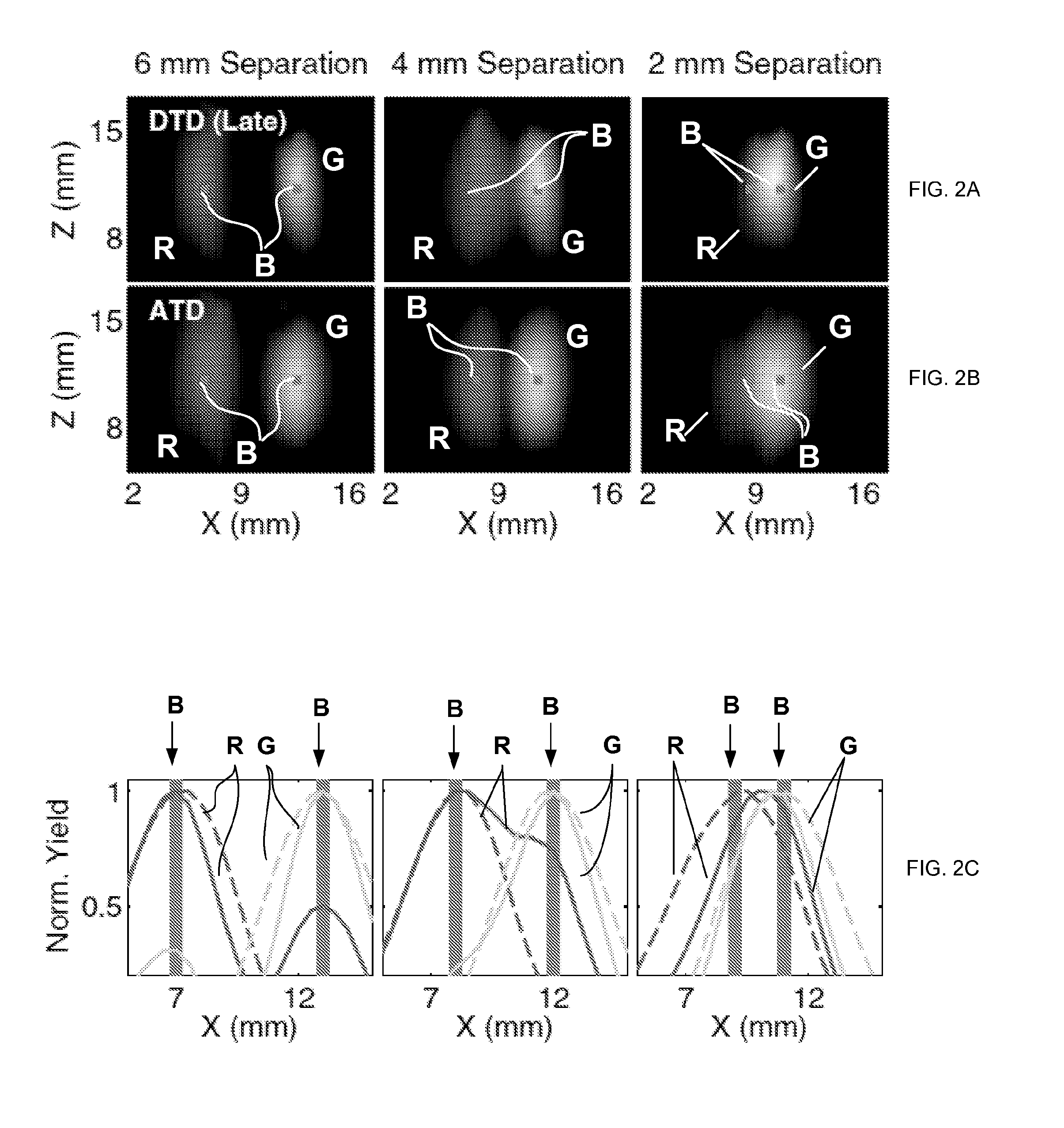System and method for tomographic lifetime multiplexing
a lifetime multiplexing and lifetime technology, applied in the field of timedomain fluorescent tomography, can solve the problems of significant lifetime cross-talk, continuous wave (cw), and inability to provide the measurement of fluorescence or phosphorescence lifetimes, and achieve the effect of increasing the spatial resolution of optical detection
- Summary
- Abstract
- Description
- Claims
- Application Information
AI Technical Summary
Benefits of technology
Problems solved by technology
Method used
Image
Examples
example 1
[0057]FIGS. 2A, 2B, 2C illustrate a comparison between the reconstructed fluorescent images procured with the use of the ATD and DTD methodologies that were applied to the same set of 12 late time-gates. The three XZ plots of each of FIGS. 3A, 3B correspond, respectively, to fluorophore-to-fluorophore separation of 6 mm, 4 mm, and 2 mm along the x-axis. FIG. 2C provides line plots for ATD (dashed line) and DTD (solid line) along the x-axis at the depth of the inclusion, obtained from the data of FIGS. 2A, 2B. The computation time for ATD was 21 times shorter than that for DTD. It can be seen from the line plots of FIG. 2C that there is significantly higher cross-talk for reconstructions obtaine d with the us e of the DTD than that in case of the ATD reconstruction. Such high-level of cross-talk in practice precludes accurate localization of the fluorophores with the use of the DTD method even for a 4 mm separation. The ATD approach, however, provides minimal cross-talk and facilitat...
example 2
[0058]FIGS. 3A, 3B, 3C show the comparison of the results of yield reconstructions obtained with the use of the using the DTD approach with four early time-gates and those obtained with the embodiment of the invention according to Eqs. (7), (8). Each of FIGS. 3A and 3B includes three X-Z plots corresponding, respectively, to separations of 6 mm, 4 mm, and 2 mm along the x-axis. FIG. 3C provides line plots for fluorescent yield distribution obtained—with the HTD embodiment of the invention (dashed line) and DTD (solid line) along the x-axis at the depth of the inclusion—from the data of FIGS. 3A, 3B.
[0059]From the early DTD data it can be observed that, while the individual yield distributions are smaller than the ATD-derived distributions of FIG. 2B, the cross-talk is significantly higher than that characterizing the ATD distributions for all separations. Therefore, localization of the fluorophores in reliance on the early DTD data only once again leads to inaccurate results. For co...
example 3
[0060]Additional independent validation of advantageous performance of the embodiment of the invention, phantom experiments were performed. To this end, parallel tubes filled with two dyes (τ1=0.87 ns and τ2=1.27 ns, respectively) and separated by 5.6, 2, and 1.4 mm, in three different scenarious, were embedded in a scattering medium consisting of intralipid and nigrosin (μa=0.1 cm1 and μ0s=10 cm1). Measurements were performed with a TD fluorescence tomography system that included a Ti-Sapphire laser for excitation and time-gated intensified CCD camera for detection. Full tomographic measurements were acquired for up to 84 sources and 84 detectors, and 46 time gates, with a time-gate width of 500 ps, CCD integration time of 100-200 ms, and the time-step size of 150 ps. The experimental reconstruction of fluorophores with life-time contrast in such phantom are illustrated in FIGS. 4A, 4B, 4C, 4D, and 4E.
[0061]Here, data-distributions marked R and G correspond to the yield-distributio...
PUM
 Login to View More
Login to View More Abstract
Description
Claims
Application Information
 Login to View More
Login to View More - R&D
- Intellectual Property
- Life Sciences
- Materials
- Tech Scout
- Unparalleled Data Quality
- Higher Quality Content
- 60% Fewer Hallucinations
Browse by: Latest US Patents, China's latest patents, Technical Efficacy Thesaurus, Application Domain, Technology Topic, Popular Technical Reports.
© 2025 PatSnap. All rights reserved.Legal|Privacy policy|Modern Slavery Act Transparency Statement|Sitemap|About US| Contact US: help@patsnap.com



